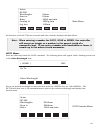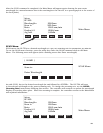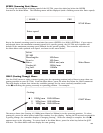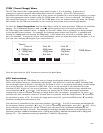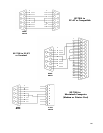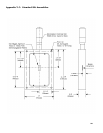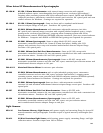
INIT-GRATING Selects which of the three gratings on the installed turret the monochromator will go to
after finding 0.0 nm on the first grating of the installed turret.
E.G. 2 INIT-GRATING selects the second grating as the default. Accepts values 1 - 9.
INIT-WAVELENGTH Sets an initial wavelength for the monochromator after initialization.
E.G. 435.84 INIT-WAVELENGTH
INIT-SRATE Sets an initial scan rate for the monochromator.
E.G. 500.0 INIT-SRATE
Section IV-D: Focusing and Alignment of Array Detectors
With a CCD or diode array properly mounted to the SP-750i, use the following procedure to align and
focus the system.
1. Mount a light source such as a mercury pen-ray type to the entrance slit of the
SP-750i. Princeton Instruments offers a standard mercury lamp, Model MS-416, designed
for this purpose. Any light source with line output can be used. If there are no “line” sources
available, it is possible to use a broadband source such as a tungsten-halogen lamp for the
alignment. If this is the case, use only a wavelength setting of 0.0nm for alignment purposes.
2. Turn the power ON and move the spectrograph to a wavelength of 435.8nm if using a
mercury lamp, or 0.0nm for a broadband source, or another wavelength corresponding to a
spectrum produced by a different ”line” source.
3. With the array detector operating, check the image of the light source if running in an
imaging mode with a CCD. Otherwise check the line intensity and shape.
4. Loosen the split clamp and slowly move the array detector IN or OUT until the sharpest image
or best focus is achieved.
5. Move the focus-stop screw until it just makes contact with the array detector mounting
flange. This enables you to rotate the detector without changing the focus position.
6. Rotate the detector until the light source image is vertical on the CCD, or until the best focus
is achieved if a diode array is used. Tighten the split clamp to secure the detector.
7. The SP-750i is now ready for operation.
19



